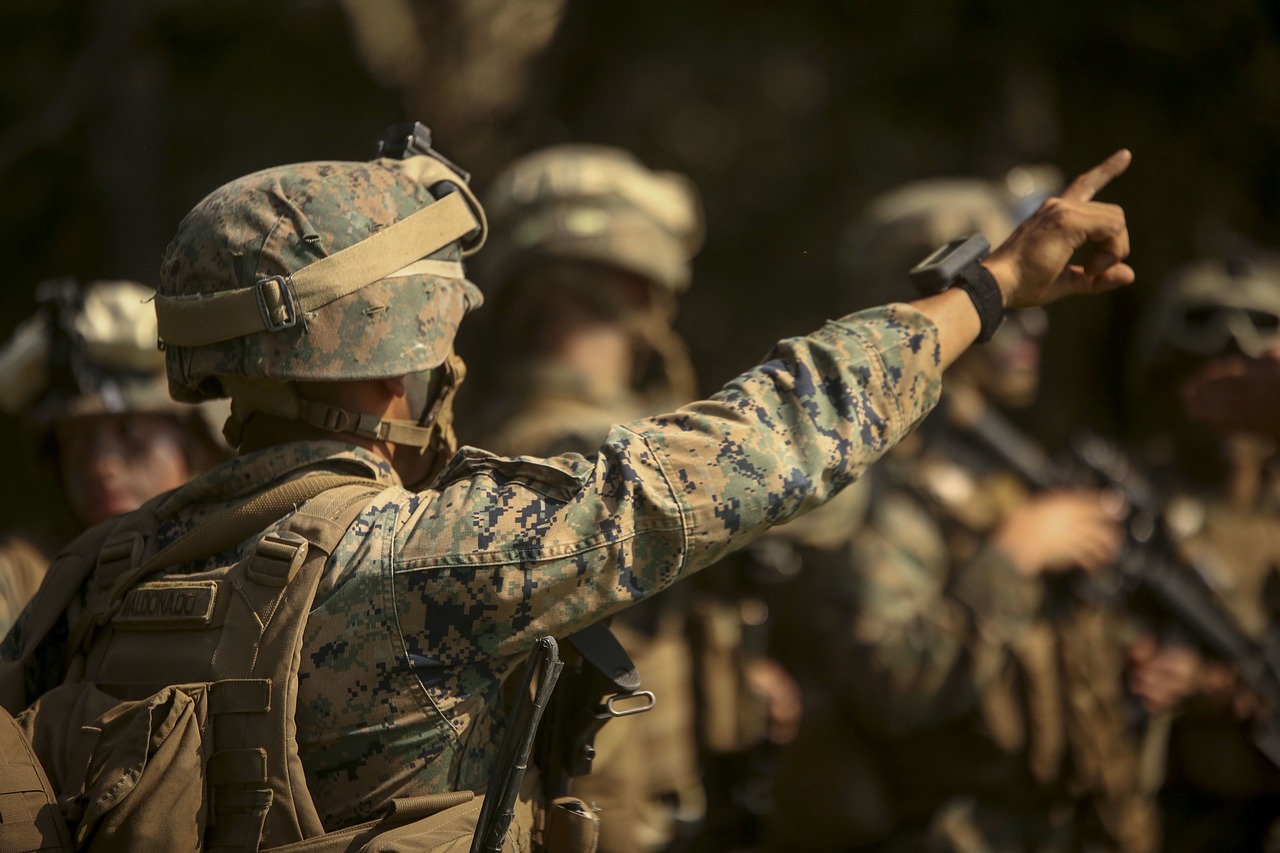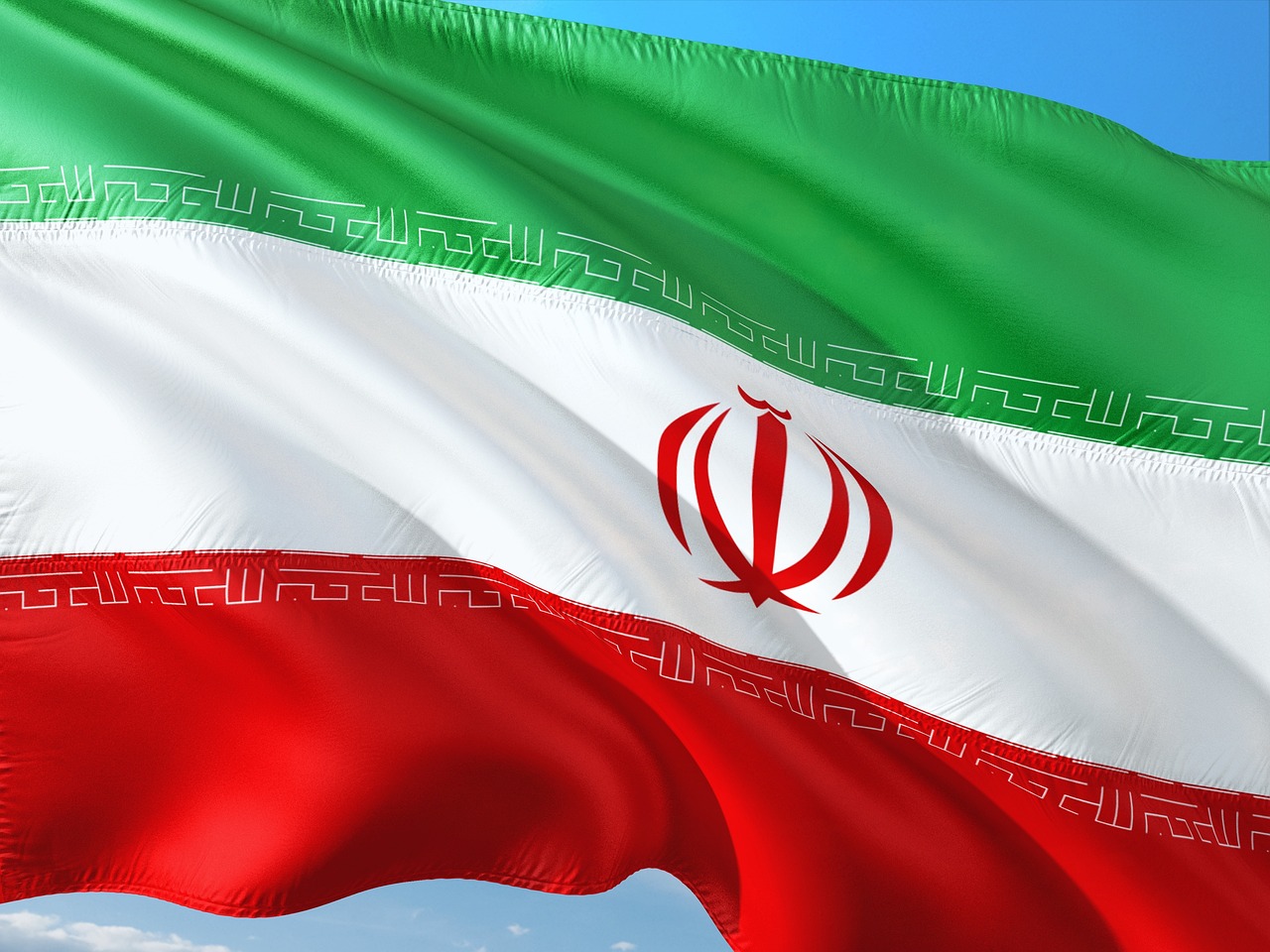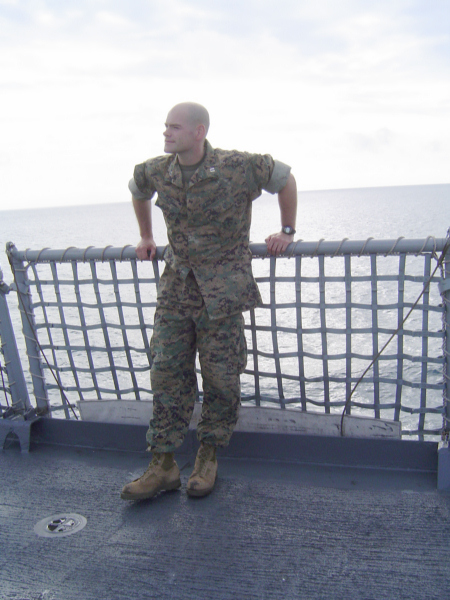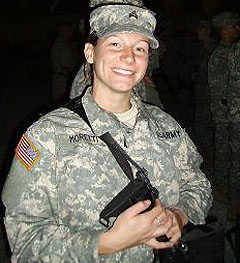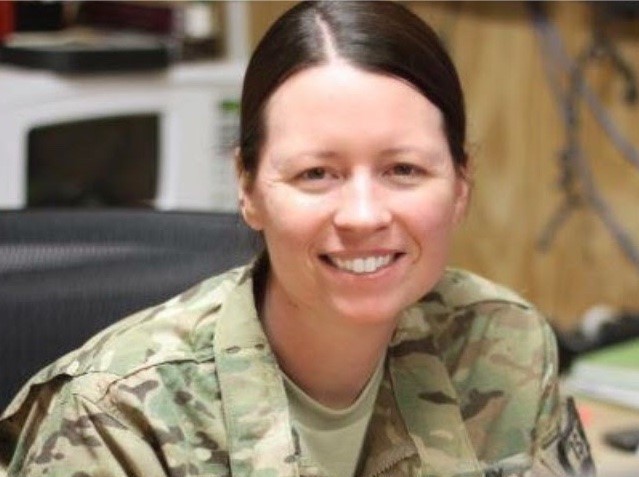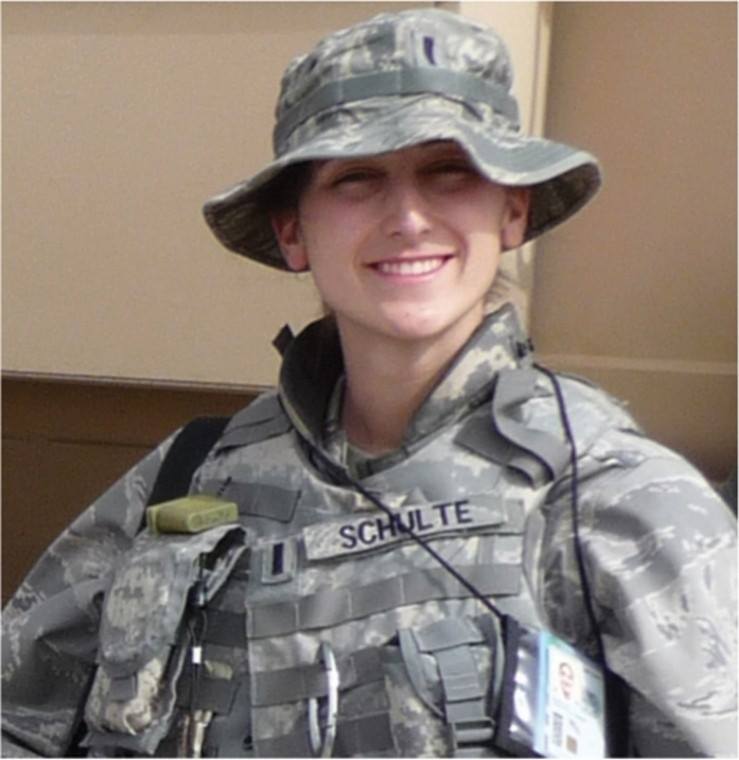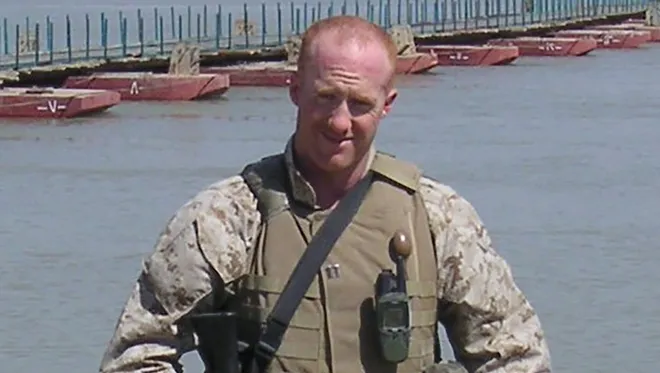MSgt James Brenneis USMC (ret).
The Marine Corps exists as a warfighting function that projects national power and global
influence. It is a vast enterprise although it is relatively small compared to the Army and the
Navy. It is an intricate system of systems that develops manpower through high-risk training, a
strong procurement branch that acquires modern equipment, and a robust training apparatus for
its personnel from acquisition of initial skills through sustainment and advancement training.
Additionally, it excels at planning, operations, intelligence, communications, logistics, and the
application of lethal force. The enterprise has standardized processes and procedures, and in
recent times the Commandant of the Marine Corps (CMC), General Berger, tasked the enterprise
to adapt to a modern fight (2019). However, resistance to change (R2C) is difficult in any
industry, let alone one that prides itself in steadfast traditions. These values and traits of this
culture that Marines work amongst shape the modern Marine with the silent reminder of the way
to be successful, is to be like your predecessor. Even with the unspoken pressure of the way
things used to be, ironically enough, every Marine can site the slogan to “adapt and overcome” is
the Marine way. Fleet Marine Force Manual 1 Warfighting (1989) stated, “War is both timeless
and ever changing. While the basic nature of war is constant, the means and methods we use
evolve continuously.” What does that say about the civilians and the Marines responsible to
develop and implement those changes? They should be at the forefront of change management
and innovation. If that statement rings true, change and adaptation should be well documented
and easy to apply in the Marine Corps.
Much of the focus of change that General Berger has instructed is on techniques,
warfighting strategy, technology, and training. The Marine Corps is a phenomenal organization
on training and development of personnel. There is no shortfall of planning or training talent that
lies within the services ranks but what I want to focus on is what the Marine Corps itself has
quite possibly have overlooked. Blinded by the gigantic operational shadow of the warfighter
and all the gear required to carry out operational phases of war are all the underlying systems and
initiatives that largely lay untouched. Their Human Resource (HR) model and information
systems that manages the Marines personnel files.
Since the focus has solely been on modernizing for a new fight it is easy to get lost in the
procurement of new technology and integrating that technology into new formations to deter our
nations enemies. This is an exponential problem because the Marines focus on all domains to
include air, sea, land, subsurface, and cyberspace. The implied task of training the new
technology down to the user level is a great responsibility. Much of the Marines’ training
apparatus is designed along the industrial model where people are numbers. However, the one
component of change that has stymied the service is being relevant in the competition space
before a conflict arises. This new concept of being forward with personnel and assets is not
relatively new and the task has largely been levied on the Joint Force in recent years. This arena
the Marines are trying to pivot towards is not where the average Marine is comfortable and only
some understand what it takes to enter these spaces. This is where modernization of Human
Resource Development could thrust the Marine Corps well ahead of where it sits currently and
truly be a form of Strategic HRD (SHRD).
Identifying occupational fields that need to be protected from information disclosure,
changing the services messaging protocols on promotion and awards, breaking up current
staffing models of staffing people to locations and not required skills desired by the units are
simple changes but would radically reshape the Marine Corps from where it sits today. F.
Buckminster Fuller said,” You never change things by fighting the existing reality. To change
something, build a new model that makes the existing model obsolete” (Fuller, F. B., n.d.). To be
clear I am not suggesting a new Marine Corps, I am recommending implementing a change on
all of the unclassified systems and categorizing certain information to be protected and withheld
from public knowledge. Personnel data bleeds over into operational data and that needs to be
considered. The fact that one set of information is classified higher than the other needs to be
assessed for what risks are currently happening that is hindering the force. That type of pivot
from the Marine Corps could drive all stakeholders to reinforce the direction it is headed.
Furthermore, this administrative overhaul and pivot could highlight how imperative it is
to change. Analysts that study organizational change should note how violent change is in our
enterprise and the ramifications that coincide with implementing change. The Commandant has
been met with public push back that typically remains silent through professional decorum, but
that silence has been broken to oppose this change. National media and retired generals all have
unleashed scathing remarks on what the Marines are trying to do. However, using SHRD to help
shape the future enterprise may be a critical gap that has not been illuminated until now. It could
also alleviate some of the pushback if incorporated into the plan.
Marine Corps Organization
The Marine Corps as an enterprise consists of roughly 178,500 personnel according to
what congress has authorized within the budget for 2022. Certain publications state 188,000
thousand but this fiscal year the numbers are planned to be drawn down by roughly 12,000
Marines. The operating environment for a Marine span’s continents. Marines consistently
participate in one of the most rigorous onboarding programs of any organization, routinely
perform high risk training, and does not have to bring a product to sale at market such as other
industries for its survival. Yet it must be competent in major domains across major industry
segments (communication, information technology, aviation, logistics, transportation,
intelligence) all while being a war fighting function. It has major areas of focus that are broken
down into different enterprise level segments chaired by Deputy Commandants (three-star
general officers) that report directly to the Commandant of the Marine Corps. It consists of
Deputy Commandant Manpower & Reserve Affairs; Deputy Commandant Plans, Policy &
Operations; Deputy Commandant Aviation; Deputy Commandant Installations & Logistics;
Deputy Commandant Combat Development & Integration; Deputy Commandant Programs &
Resources; and the Deputy Commandant Information.
These key stakeholders are the gateway to change the Marine Corps business processes
that sustain the enterprise. Ironically enough, this structure and information is foreign to the
average Marine in the fleet that enlisted to serve his country. McGuire (2014, p158) positions to
become an organization of learning the utilization of system thinking is applicable. The root
component of systems thinking is “to make organizations more effective, individuals must first
understand how the structures, processes, and strategies underpinning the organization work and
the effect that changes to the internal and external environment can have on the system as a
whole.” This thorough understanding of the Marine Corps is required by its workforce if it wants
to transcend the old ways. It is a critical gap that clearly shows at the enterprise level the service
is mapped and planned but it is failing to use SHRD down to the entry level constituent. While
most business process internal to the service are foreign to the average Marine this frustration
grows exponentially the further away you work from the Deputy Commandants. Moreover, what
I am summarizing for those that are not in the service, the commander’s intent on change gets
less clear the further away you are stationed from these Deputy Commandants influence.
McGuire continues his statement on systems thinking, “seeing organizations as dynamic systems
permits a closer examination of both subcultures and substructures and can help leaders
determine the degree to which these are appropriately aligned with the overall organizational
mission and vision” (2014, p158). Thus, I am inferring that the Deputy Commandants have a
problem of cross culture information sharing to drive future change.
Business Strategy
The business strategy in the Department of Defense and for all the services can be
summarized in the simple form of readiness. Training and readiness numbers is what the pays the
bills to congress for the Marine Corps. As directed by the 82d Congress the Marine Corps role is
to “be most ready when the nation is least” (Headquarters Marine Corps., n.d.). More recently in
July, during an interview with the Center for Strategic and International Studies, the
Commandant’s business strategy has shifted to “divest to invest” (2022). This statement has
spawned civil-military discourse for those without clearances and access to the more relevant
information because at first glance divesting suggests compromising readiness. Retired general
officers and national newspapers have taken to the media to critique, criticize, and judge the
Commandant’s decision with scathing remarks. However, our readiness comprises of fighting a
counterinsurgency (COIN) after years spent advising and assisting in Iraq and Afghanistan
during the global war on terrorism. Since the directed vacancy of Afghanistan and prior to that,
countries such as Russia, China, North Korea, and Iran have been modernizing and studying our
capabilities in these theaters. The Commandant wants his Marines to be ready for a near peer
adversary and modern warfare that will change our techniques, tactics, and procedures for a
modern enemy or the pacing threat.
Divest to invest is the strategy of gaining capital by no longer providing resources to
legacy technology and services that will not be part of a modern fight against a modern enemy
and reinvesting that earmarked money into future fight technologies or capabilities. The
Commandant’s Planning Guidance (Berger, G. D. H., 2019) was the message to the force and
commanders to pivot his beloved Corps to spawn a new era of thinking and innovation as results
of modern wargames with near peer adversaries were being published. Through this “campaign
of learning” is where the new business strategy has focused. For non-military personnel this
campaign of learning is similar to having conducted an enterprise strengths, weaknesses,
opportunities, and threats (SWOT) analysis and the service headquarters has taken these results
to focus on new fight.
Training Development
The Marine Corps does not lack the ability to train its members as an organizational
function. The Marine Corps has an entire Command dedicated to training and education known
by Marines as TECOM. TECOM is responsible for baseline knowledge acquisition and on its
webpage sates that “Training and Education Command’s (TECOM’s) purpose is to support the
Marine Corps’ preparation for war in order to ensure the Fleet Marine Forces (FMFs) win our
nation’s battles and are effective in other actions, in support of national interests” (Unit home
Headquarters Marine Corps., n.d.). I want to highlight that war and battles are key focuses by
TECOM. One key change that should be taken into account, is TECOM needs to adapt its
statement to include the arena of competition and working with the joint force and allies.
TECOM could change to consider educating units to prepare the Marines for the competition
space unique to different theaters prior to war and what critical vulnerabilities exist today that
compromise the average Marine prior to even entering a foreign country that is not at war.
The Marine Corps order 1500.63 Marine Corps Mandatory Individual Training and
Education Requirements lines out individual Marines responsibilities. Nowhere in these
requirements does it require the individual Marine to consider what parts of his personal
information our adversaries may already be tracking prior to entering a foreign country. Does it
go in depth about the future change of the service or teach the structure of the Deputy
Commandants? No, it does not. A missed opportunity to use SHRD. There is also Marine Corps
Training and Information Management System (MCTIMS) to monitor when training events are
complete and how many open seats there are for units that have allocations for training based off
their missions and the allocations to attend and enroll in training events. The Marine Corps also
has order 1500.33 Unit Training Management that outlines the units how to plan, organize and
implement training based off their mission. This order discusses the systems approach to training
(SAT) which outlines to commander’s how to prioritize training events based of mission and
planning guidance.
Organizational training guidance, enterprise training management software, collective
training guidance to the units so training is arranged and prioritized by the local commander
through SAT to ensure training is done in the same format across the service unit agnostic.
There is even guidance down to the individual to what they are responsible for as an individual
contributor. There is a robust training and development apparatus that exists currently that is
engrained in the background of every Marines career whether or not if they learn the processes or
remain ignorant to it.
Organizational Development
The service does an amazing job as an organization to drive standards but once again in
my assessment does a suboptimal job harnessing SHRD to shape the new Marines and ensuring
the entire service knows how much information is openly available to drive their decisions from
an early age entering the service. Marine promotion and selection to a new rank is a regimented
and structured version of Continuing Professional Development (CPD) as McGuire (2014)
explains in what an organization can do to ensure standards. This is an enterprise-wide system
that the service understands drives institutional knowledge bases per occupational field.
Furthermore, the transparency around the Marines that were selected for promotion is aggregated
and summarized back to the service to drive the standards. The entire service can look up the
requirements that made the selection to the next rank per occupational field. Advanced degrees,
certifications, advanced schools, physical fitness scores, rifle scores, pistol scores, and the
average number of personal awards are all transparent to the individual Marine to compare their
personal development to what was required for promotion to the next rank. This is one way the
organization has developed and driven standards through policy and governance. Additionally,
there are hard gates that instantly disqualify Marines from a promotion. Through these
requirements for promotion, this drives knowledge acquisition that requires the Marines to attend
certain schools desired by the service. Thus, ensuring that minimum knowledge levels are
attained before promotion and driving and organizational standard through the development of
the Marine.
There are other areas the Marine Corps is talented as an organization. The Marine Corps
is steadfast in its appropriations and acquisitions. They excel in codifying and capturing their
mission in plans and intent in doctrine. They have initiated a campaign of learning and are trying
to change to be relevant for a future fight. However, in my opinion the Marine Corps has fallen
behind in the implementation of using SHRD to assist the Commandant in his desired change.
Additionally, using SHRD policies to protect the individual Marine’s personal information on
legacy administrative systems. The MCTIMS software does not harmoniously populate
personnel records. As a matter of fact, operational readiness systems typically operate on the
classified level, but we do not protect our Marines personal data with the same intensity. Frankly
speaking, there are numerous administrative systems that do not talk to one another on the
unclassified level. The Improved Awards Processing System (IAPS), Marine Online, Digital
Board Room 2 (DBR2), Official Military Personnel File (OMPF), Automated Performance
Evaluations System (APES), Junior Enlisted Performance Evaluation System (JEPES), Total
Force Management System (TFMS), Total Force Retention System (TFRS) are just a few to
mention that do not seamlessly transfer personnel records and auto populate data in the same
formats. This drives user frustration but also highlights the lack of end-to-end data formats and
transfers between systems that increase manhours in administration and repetitive data entry that
could be automated.
Furthermore, the service also publicly announces promotions, job titles, critical skills,
and valor awards that compromise are high demand low density jobs through aggregation of
personal data. The Marine Corps views this through a lens of proud accomplishments and
potential positive public affairs but it does more damage to the Marine that wants to do his job in
competition vice help recruiting efforts. Through this data that is publicly available, our most
qualified are potentially already tracked by our adversaries when they travel. Furthermore, our
most talented and qualified could potentially be disqualified or passed over in selection to
perform work at the upmost classified levels due to our adversaries knowing what they do and
who they do it for. This lack of professional administration and records protect prevents potential
national level work with our joint partners and agencies because the Marine Corps has openly
compromised the Marine before the Marine even understands what is at play.
Career Development
Each Marine is similar yet vastly different. The onboarding process is dialed in and there
is a unique culture that the service is proud of, and it retains. Career roadmaps exist through
different occupational specialty. There are Communities of Practice (CoPs), occupational
managers, and even career planners. I will go back to one of the administration systems that do
not seamlessly speak with individual personnel files, TFRS.
Career planners are their own job field and are placed in units to help the service make
reenlistments quotas on time and process paperwork to headquarters Marine Corps. They focus
on the numbers that need to be retained per occupational specialty and ease the commander’s
responsibilities in taking care of his Marines and utilize TFRS. This system is in dire need of
modernization. Reenlistment packages are printed on hard copies, routed by hand through staffs,
and Marines are individually responsible about manually updating things and printing records. In
a post covid society, digital signatures could be used. Digital workflow routing and even a
modern application could be developed that pull the requisite data to speed the process up and
use less office supplies. Here again, a seemingly small investment would save manhours,
resources, and modernize another administrative function. The overall intent on the
modernization should be to protect the unique skill and personal information of the Marine
because this information is unclassified as well and is subject to our nation’s adversaries with a
simple cyber-attack.
Furthermore, during reenlistment when the Marine volunteers to continue their career in
the service, no performance metrics for your occupational specialty are looked at. You are
merely binned into different tiers based off service wide criteria not military occupational
specialties of your job field. The most highly qualified technical fields which are extremely
expensive to train could be the potentially lowest tiered Marine for reenlistment because of not
running fast and not doing as many pull ups. Nothing is weighed against his or hers technical
acumen during this process and that tends to disenfranchise the individual who understands they
perform a different role for the service.
Infantry, intelligence, cyber, special forces, explosive ordnance disposal, aviators and
logisticians are just a few occupational fields that I would recommend to be protected by merely
just referring to them as the title Marine and remove the military occupational specialty number
associated with them publicly. Make their skills classified. Protect our human capital. Awards
write-ups that include the unit, name, location, and action against certain enemies and countries
should be classified. When the service awards a Marine for exemplary performance our heroism
there should be an official ambiguous statement publicly and a classified ceremony that protect
the actions, skills, and locations the Marines have been to keep our enemy guessing our
capabilities. This would be using routine administrative functions as a strategic deterrence in the
form of SHRD. This level of investment would help the Marines move in and out of the
competition space yet demonstrate to the service that we are growing all outlets of the service to
include their human resources functions. These are just small changes that would make
substantial changes across the service.
Part 2. Kirkpatrick’s four level taxonomy
The Marine Corps as discussed, has various areas to focus on for ontological
improvement but for the purpose of this HRD plan I have focused on the administration of the
individual records of Marines and the systems currently employed to do this with the intent to
potentially increase strategic accesses in other countries during competition. Additionally, I will
be evaluating the recommended needs and suggestions of my HRD plan for the Marine Corps
using Professor Donald Kirkpatrick’s four level taxonomy to help assess the results of the
training and epistemological effects on the enterprise.
Professor Kirkpatrick has four levels that consist of reactions, learning, transfer, and
results. Through this method it takes into account the individual reactions of the constituent. The
style of learning and method of delivery. The results of knowledge transfer and skills retained
and the impact to the enterprise from the training and the change it brings with it.
Reactions
The feedback loop is critical to change and the assessment of effectiveness. Additionally,
feedback can highlight critical gaps by the anticipated documented reactions or lacking results
that were thought to prevail. If the trainee provides what was not understood, once this is
provided and captured, the curriculum can be adjusted. These adjustments can drive change in
your methods. In level one of Kirkpatrick’s taxonomy McGuire (2104) described as
“reactionaries” or “happy sheet” but commonly known by our culture as a survey. This first level
feedback can help assess delivery of the information, highlight to managers the perceived and
desired change in the organization, or the conduct of the trainers that could limit the delivery of
the curriculum. The feedback from this first level is paramount at educating the directors of the
change and weighing how the enterprise receives it. Furthermore, the second and third order of
effects on the culture and camaraderie of the organization could be captured.
It is important to note that feedback at this level can be robust and indicative of other
factors such as not understanding the need for the change or the mission statement driving the
required change. It is also significant to understand that satisfaction of the trainee does not
highlight the effectiveness of the change. Some personal will not understand the critical
vulnerabilities that I have suggested for information systems for the Marine Corps. As stated
before, the Marine Corps does not have a process that protects the individual Marine prior to
entering competition space. It is unknown if there is a cumulative tracking program on how
much personal information has been released to the public on promotions, awards, units,
locations, and job descriptions. These vital statistics could prevent one Marine from another
gaining clearance from a country to conduct humanitarian assistance during a time of peace in
certain politically and diplomatically sensitive areas. Whereas in war, some of these concerns
are not necessary. Protecting the Marines critical skills, prior missions in other countries, and
experience, could help ease foreign entry requirements so we can stage Marines strategically.
Additionally, teaching administrators of Marine personal administrative systems what data could
cause them to be targeted when they enter other countries for various semi-permissive missions
is the upmost priority and driver of change.
During proposed modifications of administrative systems some important feedback to
anticipate would be necessary to judge the baseline of knowledge. Questions such as why is it
necessary to obfuscate and hide personal information from adversaries? Why is the Marine
Corps taking such a radical approach on classifying personnel data? These two simple questions
could be a measurement of the clarity of modernization and change. If the average Marine does
not understand the risks associated to the service by this information hanging out for anyone to
capture than that tells the Commandant, the lack of clarity of his commander’s intent down to the
lowest level. This would be ample feedback to use SHRD to adjust the training and possibly the
messaging of the Commandant’s annual message to the force.
Learning
Learning is a broad term that represents multiple different aspects depending how it is
used. The individual learner, being a learning organization, developing new curriculum are some
aspects that can encompass the term learning. For this case it will be the acquisition of
knowledge with the intent on becoming a learning organization to better protect the available
information of the individual Marine.
The use of SHRD will bring forward two things into the enterprise. The first part will
force the organization to realize all the data points that is released publicly on the Marine. By
itself, one promotion seems harmless. However, when aggregated together with foreign travel,
promotions, awards, job titles, and critical skills are released to the public and could lead our
adversaries to infer certain operational activities will take place and compromise missions.
Identifying as an enterprise what key data points need to be protected will drive the organization
to learn how to change policy and protect the data.
The second part of changing administrative systems will be to teach the individuals why
the change needs to take place. Overhauling the various administrative systems will require new
skill acquisition and an adjustment of daily work routines. The workforce needs to understand
clearly why the new processes need to change from the way things used to be to a modern
approach to taking care of Marine records. Without connecting the vision and intent of the
change with why the change needs to occur can leave the average worker to fill in the message
on their own. Without all the background on why the change needs to happen could allow that
average worker to have a position of ignorance driving the resistance to change to increase for no
other reason than not understanding. Driving a clear message, tied into the campaign of teaching
new systems and administrative processes, would be the first steps into influencing
organizational and individual learning simultaneously
Transfer
Transfer will be demonstrated immediately in the Marine Corps SHRD plan even if the
percent of transfer is not relatively high in the individual learner. This will be due to abandoning
old legacy ways of administration that would include paper routing, release of unclassified
messages, and harmonizing systems that do not talk to one another. If these changes took place,
it would drive new standard operating procedures and radically change to a new way to operate.
The key to this organizational change is to transfer the “why” the need for change.
Hacobian (2016) is credited for the individual to become an agent of change within an
organization. Understanding why the change needs to take place helps those Marines become a
change agent. A campaign of learning needs to be implemented from the administrators down
through the individual Marine. Every unit would need Commanders to explain the overhaul and
the SHRD message needs to be planned and systematically reinforced at all levels. It would be
cumbersome, but the change would be instant. Continued learning would be required to tighten
up the new standard operating procedures so that they become more efficient and seamless in the
workplace.
Results
Measures of performance and effectiveness exist in intangible and tangible formats.
Mapping the desired results in tangible measures would be needed in qualitative and quantitative
metrics. Baseline processes and times associated with daily work would be measured on legacy
systems such as reenlisting. Demonstrating the amount of time saved could be one tangible
result. The real result desired in the SHRD plan is the lack of information that would be available
to the public moving forward after the changes. Through this result would have intangible effects
on our adversaries. By protecting the military occupational specialty codes would keep our
enemies guessing at our capabilities. By protecting personnel files and treating every Marine as
just a Marine vice cyber, infantry, intelligence, reconnaissance would fundamentally change how
our enemies monitor and predict our capabilities as well. Through this obfuscation moving a
Marine in and out of competition spaces would be seemingly harmless. Furthermore,
withholding career road maps, critical skill descriptions, job descriptions, training and course
summaries from publicly available data sources will contribute to protecting our force.
Here is a speculative example if the change took place to protect job titles and
capabilities. If a small group of twenty Marines went to country “X” for an exercise seems
mundane. Twenty Marines going somewhere could be viewed as routine if done on an
operational schedule. Take the same group and the twenty Marines consisted of twelve
reconnaissance Marines, two logisticians, two signals intelligence Marine, one geospatial
intelligence Marine, one armorer, one all source intelligence analyst, and one ground intelligence
officer changed the assessment of what they are doing by merely knowing their job roles. One
could infer that some sort of collection activity is taking place on behalf of the American
government and United States interests. Furthermore, through a commercial flight manifest the
gaining country could look up all awards which would include names ranks and units worked for
with a brief description of the exemplary achievements. Protecting personnel data is the key to
getting our highly trained professionals into the areas we need them during competition.
Moreover, keeping our adversaries guessing at our capabilities is a method of deterrence but also
protects our Marines abroad from being targeted.
Conclusion
The Marine Corps lives and operates in a unique business segment that touches most
industries without many people recognizing the diverse talent amongst their ranks. The
leadership qualities of a Marine are recognized but the technical acumen across multiple domains
has been achieved and sustained through robust recruiting, training, and operational arms that
keep the force with the requisite manpower, the latest training methods, and equipped with
modern technology. They take in samples of the workforce from across all of America, all races,
religions, and genders and continue to train all varieties of people. They conduct a rigorous
onboarding process to ensure the customs and traditions have a firm baseline being set in all their
people to maintain their culture. They invest in critical and mission essential skills to be taught to
their work force and do a good job at it although sometimes painful to the individual trainee that
has to go through the process.
The HRD plan that I have proposed asks the service to take one more step in protecting
their people. The Marine Corps does not only need to protect their people on the battlefield but
also during their training and documenting of their skills they require. Through what seems to be
simple adjustments and relatively little investment in the modernization of these administrative
systems can help achieve what the Commandant wants and is tasked to do and have his Marines
ready when the nation is not. Furthermore, treating the records of their people with the same
regard as operational documents will keep our adversaries guessing at numbers and critical
capabilities which can be done through policy change and not substantial investment in
technology. Utilizing SHRD and implementing these administrative changes will assist in protect
the individual capabilities of Marines. It will demonstrate a steadfast resolve to protect their
human capital and assist the Marine Corps to become a noteworthy and trusted capability for the
joint force to use high demand low density skill sets in the competition space before a war ever
begins.
MSgt Brenneis is a retired Special Intelligence Communicator. He deployed to Iraq in 2005 with 1st Intelligence Battalion, and to Afghanistan with 1st Marine Special Operations Battalion in 2009, 2011, and 2012. His last assignment on active duty was the Senior Enlisted Advisor to the Marine Corps Intel Command Information Officer in the Enterprise Management Office at HQMC Information Intelligence Division.
References
Architect, designer and inventor: Buckminster fuller on change. (2013, August 15). https://fuelingnewbusiness.com/quote/architect-designer-and-inventor-buckminsterfuller-on-change/.
Berger, G. D. H. (2019). 38th Commandant’s planning guidance.
Hacobian, A. (2016). A change agent compass for system transformation: Harnessing the use of self. In D. W. Jamieson, R. C. Barnett, & A. F. Buono (Eds.), Consultation for organizational change revisited (pp. 171-183). Information Age Publishing.
Marine Corps Force Design 2030: Examining the capabilities and critiques. Marine Corps Force Design 2030: Examining the Capabilities and Critiques | Center for Strategic and International Studies. (n.d.). Retrieved November 8, 2022, from https://www.csis.org/analysis/marine-corps-force-design-2030-examining-capabilitiesand-critiques
Marine Corps Order 1553.3A Unit Training Management (UTM). (n.d.). Retrieved November 8, 2022, from https://www.trngcmd.marines.mil/Portals/207/Docs/safety/MCO_1553.3A_UNIT_TRAINING_MANAGEMENT_(UTM).pdfver=KKNma9rtDzn6W_zHdDWMg%3d%3d
Marine Corp Order 1500.63 Change 1 Mandatory Individual Training & Education Requirements. Marines.mil – Official website of the United States Marine Corps. (n.d.). Retrieved November 8, 2022, from https://www.marines.mil/News/Publications/
McGuire, David. (2014). Human Resource Development: Vol. Second edition. David McGuire. SAGE Publications Ltd. Unit home. Headquarters Marine Corps. (n.d.). Retrieved November 8, 2022, from https://www.hqmc.marines.mil/
United States Marine Corps (2010). Marine Corps Warfighting Publication (MCWP) 5-1: Marine Corps Planning Process. Marine Corps Logistics Base, Albany, GA.
U.S. Marine Corps. (1989). Warfighting.

